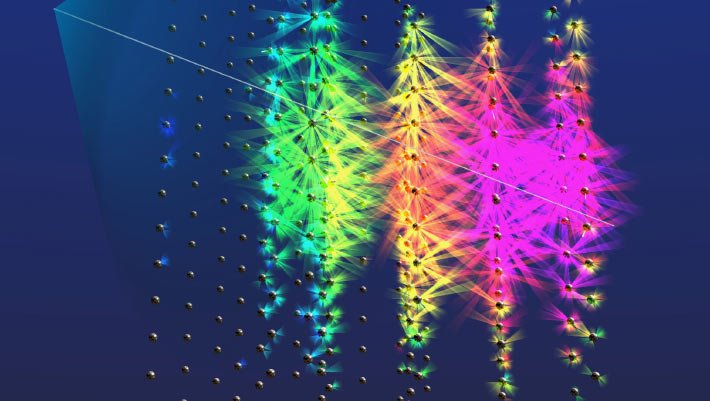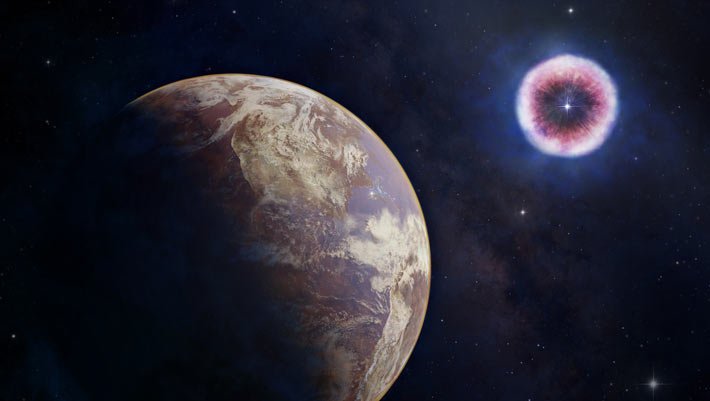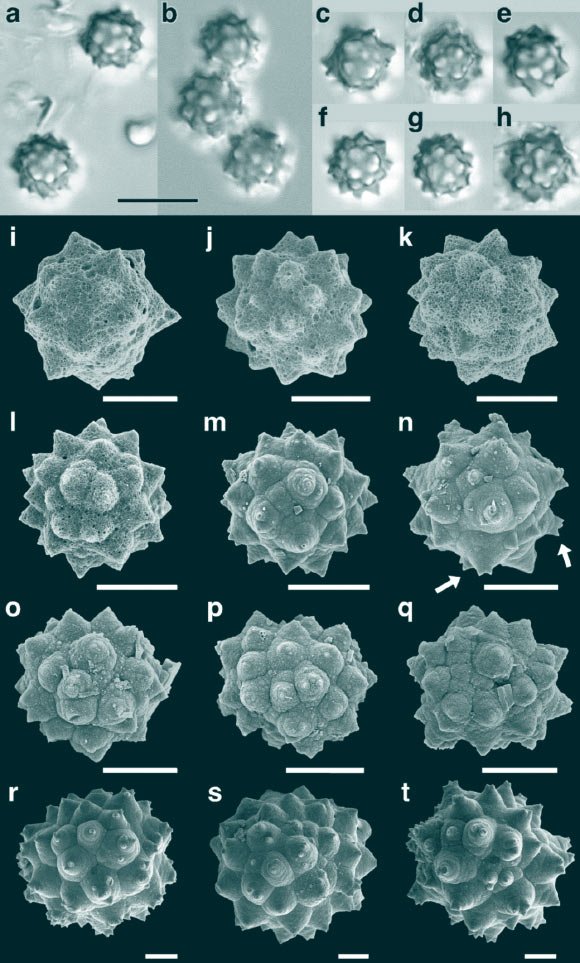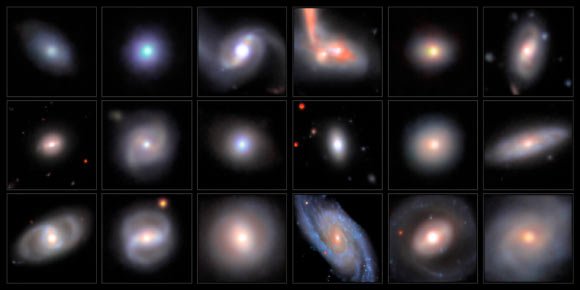Dubbed KM3-230213A, the newly-detected neutrino carried an astonishing energy of 220 peta-electronvolts (PeV), making it one of the most powerful elementary particles ever detected. Its energy was roughly a 100 million billion times the energy of visible light photons and about 30 times the highest neutrino energy previously detected.

Visual impression of the ultra-high energy neutrino event observed in KM3NeT/ARCA. Image credit: KM3NeT.
Cosmic neutrinos may be produced either in the vicinity of the cosmic-ray source or along the cosmic-ray propagation path, leading to the production of secondary unstable particles, which subsequently decay into neutrinos.
Cosmic rays interacting in the Earth’s atmosphere produce atmospheric neutrinos, which form an experimental background to cosmic neutrinos.
To detect cosmic neutrinos, very-large-volume neutrino observatories monitor natural bodies of water or ice for the Cherenkov light induced by the passage of the charged particles that result from neutrino interactions in or near the detector.
“High-energy neutrinos like this are extremely rare, making this a monumental discovery,” said Western Sydney University’s Professor Miroslav Filipovic.
“The discovery represents the most energetic neutrino ever observed, and provides evidence that neutrinos of such high energies are produced in the Universe.”
“Detecting such an extraordinary particle brings us closer to understanding the most powerful forces shaping our Universe.”
The detection of KM3-230213A was made possible through the advanced capabilities of the KM3NeT telescope, which uses photomultiplier tubes to capture light from charged particles generated when the neutrino interacts with the detector.
“The KM3NeT research infrastructure comprises two detector arrays of optical sensors deep in the Mediterranean Sea,” the physicists said.
“The ARCA detector is located offshore Portopalo di Capo Passero, Sicily, Italy, at a depth of about 3,450 m and connected by means of an electro-optical cable to the shore station of the INFN, Laboratori Nazionali del Sud.”
“The geometry of ARCA is optimized for the study of high-energy cosmic neutrinos.”
“The ORCA detector is located at a depth of about 2,450 m, offshore Toulon, France, and is optimized for the study of neutrino oscillations.”
“Both detectors are under construction but already operational.”
The KM3-230213A event recorded over 28,000 photons of light, offering a clear trajectory and compelling evidence suggesting the particle’s cosmic origin.
“KM3NeT can reconstruct the neutrino’s trajectory and energy,” said Dr. Luke Barnes, also of Western Sydney University.
“It takes extreme cosmic conditions to create such a neutrino, like an exploding star or supermassive black hole.”
“That’s where our work on following up with radio telescopes, like the Australian Square Kilometre Array Pathfinder, can help to unlock their secrets.”
The researchers concluded that based on a single neutrino, it is difficult to definitively determine its origin.
Future observations will focus on detecting more such events to build a clearer picture of their origins and the astrophysical processes behind them.
“The energy of the KM3-230213A event is much larger than that of any neutrino detected so far,” the scientists said.
“This suggests that the neutrino may have originated in a different cosmic accelerator than the lower-energy neutrinos, or this may be the first detection of a cosmogenic neutrino, resulting from the interactions of ultra-high-energy cosmic rays with background photons in the Universe.”
The team’s paper was published in the February 12 issue of the journal Nature.
_____
The KM3NeT Collaboration. 2025. Observation of an ultra-high-energy cosmic neutrino with KM3NeT. Nature 638, 376-382; doi: 10.1038/s41586-024-08543-1











